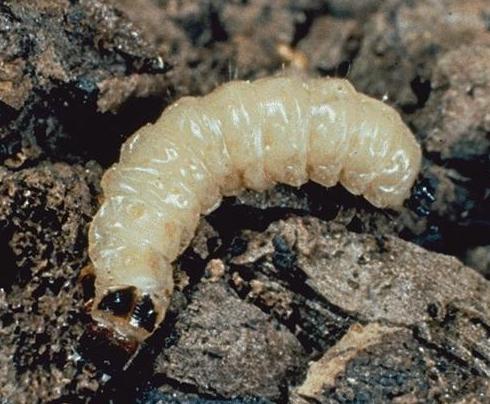
Two weevils crept from the crumbs. “You see those weevils, Stephen?” said Jack solemnly.
“I do.”
“Which would you choose?”
“There is not a scrap of difference. Arcades ambo. They are the same species of curculio, and there is nothing to choose between them.”
“But suppose you had to choose?”
“Then I should choose the right-hand weevil; it has a perceptible advantage in both length and breadth.”
“There I have you,” cried Jack. “You are bit — you are completely dished. Don’t you know that in the Navy you must always choose the lesser of two weevils? Oh ha, ha, ha, ha!”
For those unfamiliar with “the Canon” as Patrick O’Brian fans are prone to call the Jack Aubrey novels, the above exchange comes from The Fortune of War.
What were these weevils, lesser or greater?
The stories of weevily ship’s biscuit seem to have been greatly exaggerated over time. The typical fictional variety is usually described as having a black head and allegedly having a vaguely metallic taste. Janet MacDonald traces these stories from John Masefield’s “Sea Life in Nelson’s Time” (which is the Q document of much of what we think we know about life at sea in the Age of Sail) to Tobias Smollett’s novel, Roderick Random to Antonio Pigafetta.
Let’s examine the effects in reverse. There are many accounts of “cockroaches” having reduced biscuits to powder. While it could be a simple fact of finding cockroaches in a bread bag and vigorously applying the post hoc ergo propter hoc logical fallacy, more likely than not the bug in question is not a cockroach but a Cadelle beetle (Tenebroides mauritanicus). It’s larvae, up to a healthy 20mm in length (pictured at the top of the story) are what were called bargemen by sailors because they were visible in the bread barge on a table.
Bargemen, however, did not have an appetite for bread. Their interest was in the smaller Bread Beetle (Stegobium paniceum) (max length of 4 mm) whose larvae, nearly invisible at .5 mm, ate the bread.
These larvae cover themselves in a mixture of bread dust and saliva and are quite unnoticeable. They get into the biscuit at some point between the bakery and the sailor. The likeliest culprit is the bread bag itself where some larvae are undoubtedly contained in the residual dust in the bag.
The larger weevils, Stephen Maturin’s Curculio, typically live in flour and if they were present in the bread could only have appeared in warm, moist conditions.

Referring to Masefield’s book as the “Q Document” perhaps glosses over the contribution to a few other revealing texts.
Let me offer two titles by American authors that offer excellent insight into the “Age of Sail”
The first is, “White Jacket, The World in a Man-of-War”, by Herman Melville. (I understand that this novel was instrumental in changing how the US Navy treated sailors.) The second is, “Two Years Before the Mast”, by Richard Henry Dana.
Though I’m sure that these are referenced elsewhere on this site, they bear mentioning again. I hope you find them good reading.
thanks for the suggestions. I’m somewhat familiar with Dana’s book and not at all familiar with Melville’s, though “Billy Budd” perhaps provides some of the best insights of how the military justice system works that I’ve seen.
Pingback: Two Weevils « 6legs2many